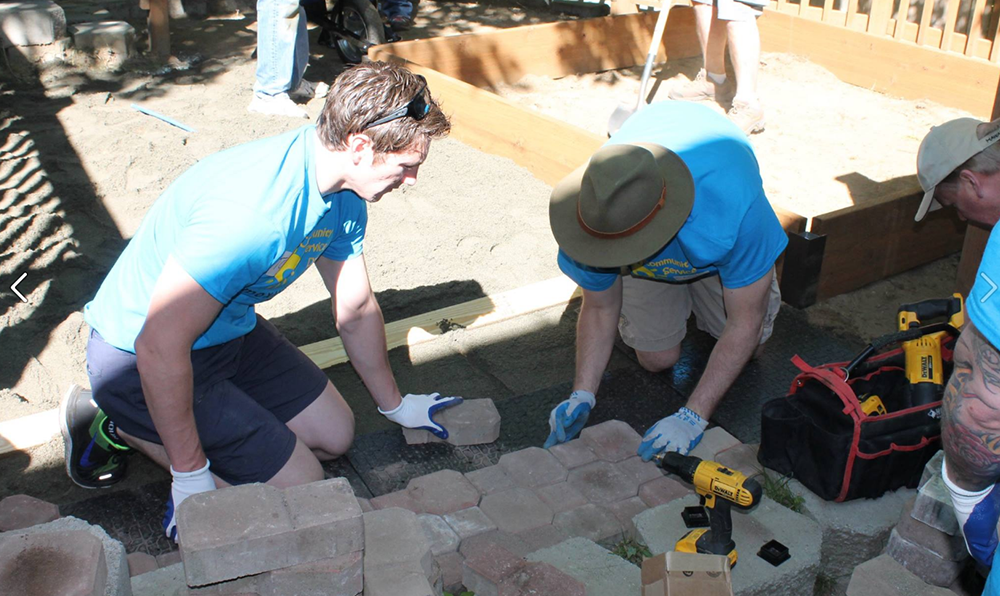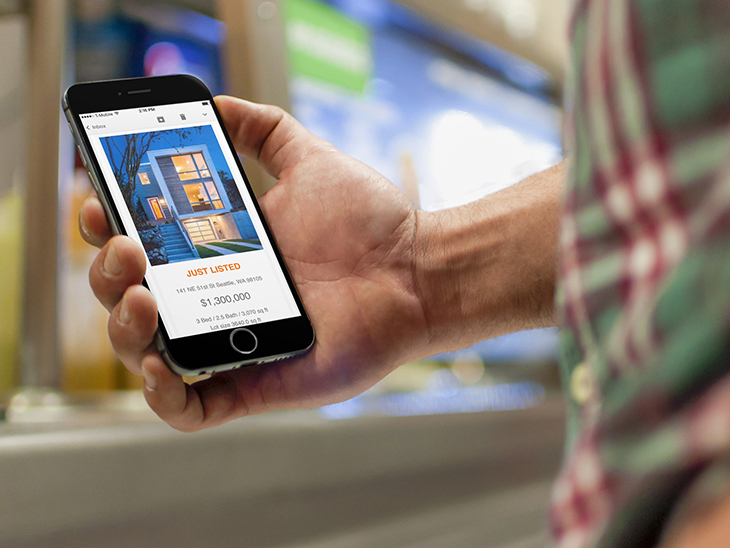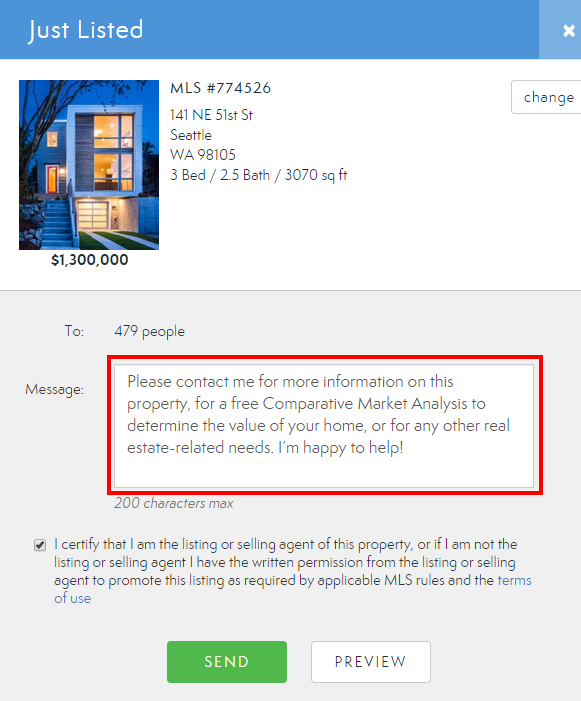Update: Moxi Present

 We’re excited to announce that we’ve made some updates to Moxi Present, the presentation builder designed specifically for real estate agents. Moxi Present is unique in that it’s completely customizable and is integrated with the MLS, pulling property data directly into an agent’s presentation. It can be used to create any type of presentation, from CMAs, buyer presentations and open house presentations, to neighborhood tours and more.
We’re excited to announce that we’ve made some updates to Moxi Present, the presentation builder designed specifically for real estate agents. Moxi Present is unique in that it’s completely customizable and is integrated with the MLS, pulling property data directly into an agent’s presentation. It can be used to create any type of presentation, from CMAs, buyer presentations and open house presentations, to neighborhood tours and more.
This tool consistently earns high adoption rates, which is why making it available for all agents within client brokerages is of high importance to us. As of mid-December, we’ll be sun-setting the TouchCMA iPad app. Why? Because the web-based version of Moxi Present is completely responsive and even better. We’ve found it has a better user experience and better integrates with the other Moxi tools.
Don’t worry… the presentation builder you know and love isn’t going anywhere. In fact, it’s only improving.
If you currently have the app, it won’t be disrupted for the foreseeable future. The iPad app will still be available, but will no longer be updated or supported. Come December, the iPad app will no longer be available in the app store. This will inhibit any new downloads or updates, but will have no effect on existing installs.
For agents who currently use Moxi Present, they’ll still have the same Moxi Present tool, but only the web app version will be supported in the future. The tool is entirely responsive and can still be accessed on an iPad, but instead of having to download it through the App Store, agents can simply log in online.
A few months ago, we officially changed the name of TouchCMA to Moxi Present. The product didn’t change, it just started coming in better packaging. Now, we’re streamlining the tool even further. In order to continue the necessary support and updates, it makes the most sense to focus on continuing to optimize the web-based app to be used by agents on any device.
It’s no secret that we’re committed to integration. These are just a few steps we’re taking to simplify and enhance the user experience for agents – making them more productive and successful.
How Spacio Launched to a Major Broker in Two Days
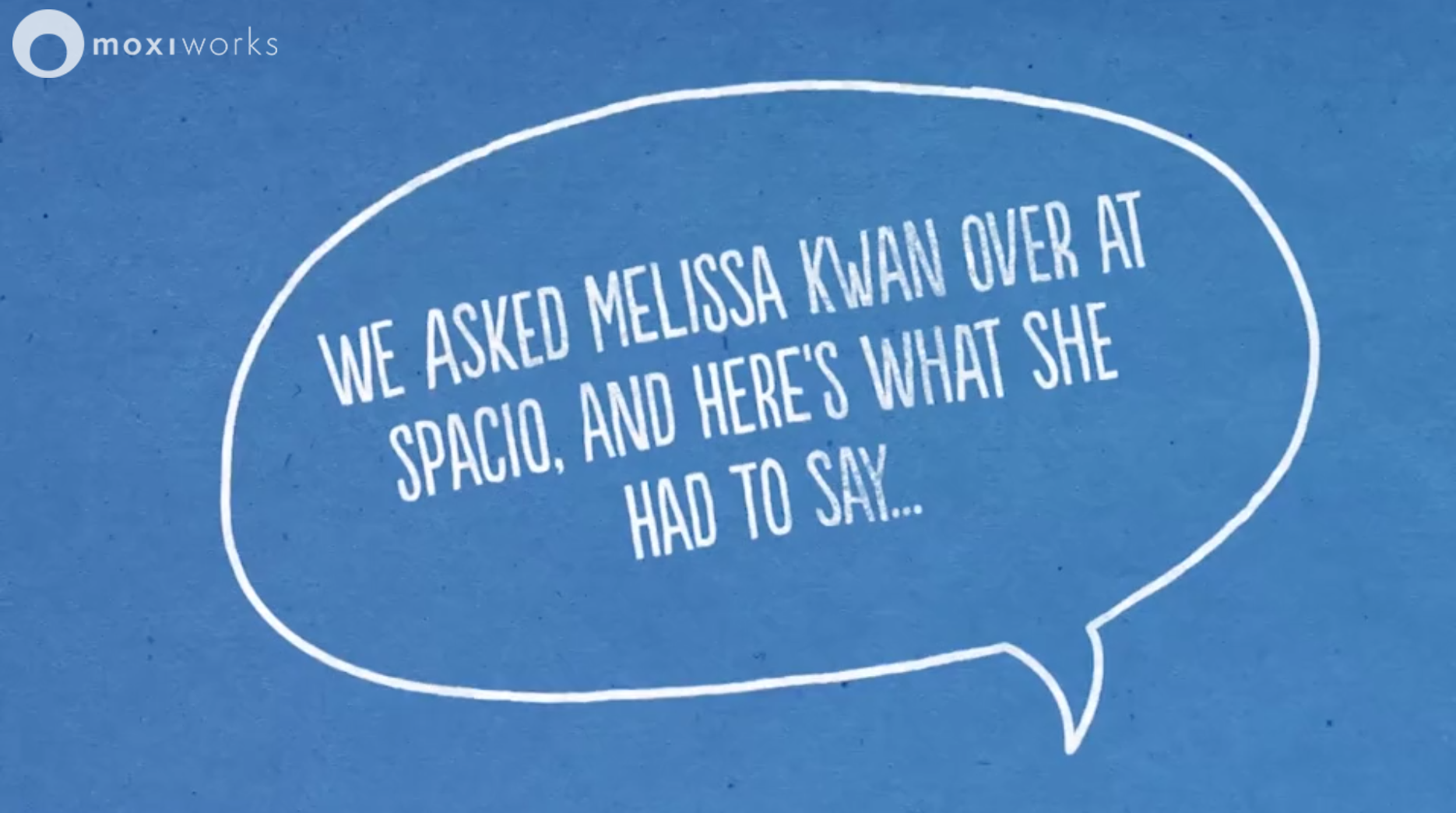
At Moxi Works, we pride ourselves on providing the only true open platform the real estate industry has seen thus far, and having an impeccable platform integration system to go with it. We do this by providing these five key factors in our open platform, the Moxi Cloud:
1. Property data
2. Brokerage and agent data
3. Consumer data
4. Integration with the cloud environment with Microsoft and Google
5. An API allowing other companies to integrate
All of these pieces of data and platform integrations work together, effortlessly, in one place. Our open API is the reason we’ve grown to include over 30 integrated tools and services this year and had seamless platform integration for each. Among these 30 partners are companies like DocuSign, Imprev Marketing, Loop & Tie, Offrs, Move Easy, Spacio, and many more. As an open platform provider, we strive to partner with leading companies to offer our clients a suite of best-in-class tools and services. Platform integrations range from single-sign-on (SSO) to data sharing and everything in-between. Brokerages and their agents benefit from a consistent, robust technology ecosystem and a streamlined, efficient workflow.
Spacio Launches to Major Broker in Two Days with Our Platform Integration
 Curious about what it’s like to work with our team or what it would look like for your company? Spacio, for instance, was able to effortlessly and quickly take advantage of our platform integration with the Moxi Cloud, and deliver swiftly to their large brokerage client. What used to take many, many days, only took a short time and didn’t require any extra software development. We asked Melissa Kwan over at Spacio what her experience has been like working with Moxi Works – check out the video below to see what she had to say.
Curious about what it’s like to work with our team or what it would look like for your company? Spacio, for instance, was able to effortlessly and quickly take advantage of our platform integration with the Moxi Cloud, and deliver swiftly to their large brokerage client. What used to take many, many days, only took a short time and didn’t require any extra software development. We asked Melissa Kwan over at Spacio what her experience has been like working with Moxi Works – check out the video below to see what she had to say.
The Moxi Cloud is able to perform smooth platform integrations by having the data available in the cloud. This is what makes it all possible. We don’t pretend to be amazing at everything. We let our brokerages choose the best tools and services out there for their brokerage and integrate them into our platform. We want the power to stay in the brokerages hands, allowing them to curate the tools and services they think are best for their own agents. Every brokerage is unique and because of it, each needs a unique solution.
Interested in partnering with Moxi Works? Reach out to us!
Why You Should Use Open House Presentations Every. Single. Time.
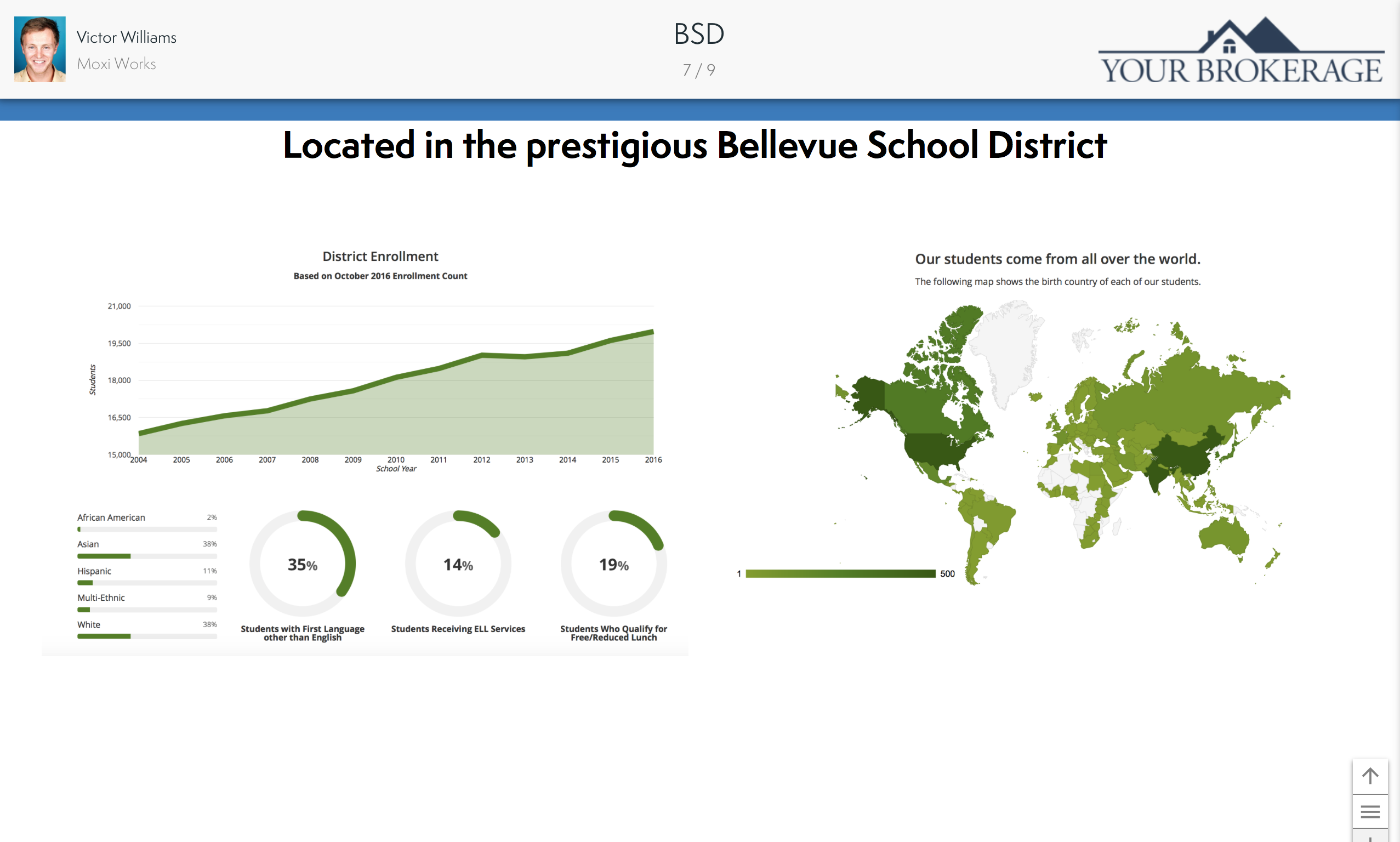
Open house presentations are the new standard. Gone are the days when you could put out a plate of cookies, sit back, and reap the benefits. Markets are crazier than ever and the competition couldn’t be vaster. Stepping up your open house game will ensure success and help beat out the competition.
Here’s why you need to use open house presentations moving forward:
Better Chances of Converting
Open house presentations allow you to have a better chance of converting a buyer for your listing. How come? With automated marketing sending out your presentations to open house guests, you’re reminding them of the house they saw, and why they loved it.
Since home buying is the largest and most emotional purchase in a client’s lifetime, chances are they’re going to need constant cues and reassurance of why they should take the leap. Open house presentations remind them it’s there and allows them to fall in love with the home over and over again.
Check this page out for open house presentation samples so you can get an idea of what agents are providing to potential buyers.
Lead Generation
There’s a new way to “Open House” and it involves killer lead generation, tying into buyer conversion. Spacio is a lead catcher tool that allows agents to host paperless open houses and turns them into powerful sales opportunities. They do this with a few simple strategies.
Simple and Paperless Lead Capture: A modern and inviting sign-in form collects visitor information and leaves them with an unforgettable first impression. Spacio verifies the accuracy of visitors’ contact information so agents can focus their efforts on the highest quality leads.
Follow Up: Spacio automatically sends a follow-up email to prospects after they sign in. Through our CMA tool, Moxi Present, the follow-up email can include agent’s customized interactive presentations for the listing. Spacio also gives agents access to all the open house leads in their Moxi Engage CRM.
Get Insights on Your Most Likely Customers: Spacio gathers social insights on visitors and surfaces the most likely customers based on the agent’s Ideal Customer Profile. Lead Quality Scores are based on the agent’s preferences and a variety of factors, including how visitors answer questions on the sign-in form and public data available on leads.
Learn more about Spacio and how they’re changing the game.
Millennials
If those aren’t good enough reasons to convince you why open house presentations are a must, then how about this. Millennials, who are now the largest generation buying homes, are a different animal. In fact, millennials represented 45% of all purchase loans in 2016.
They’re not the only ones that expect more from real estate agents these days either. With articles like this coming out all the time, it’s getting more and more vital for agents to have an indisputable value proposition. Older, tech savvy generations expect more now as well, and you can make your worth obvious with your expert open house. But still, don’t forget the cookies.
Ten Segmentation Strategies for Your Client Database


A customer database is the lifeblood of a real estate agent’s business. Within their contacts are all the buyers, sellers, and prospects they’ve worked with in the past and hope to work with in the future. A timely, but vital task is keeping that database up-to-date and organized in the most efficient fashion. There’s one way to ensure database success: marketing segmentation.
With that in mind, here are ten customer segmentation strategies:
Segmentation via Demographics
You can breakdown your contacts by any combination of age, gender, income, education, ethnicity, marital status, education, household (or business), size, length of residence, type of residence or even their profession/occupation.
1. Try breaking contacts up based off type of residence. Those with condos might be looking to upgrade to a house. Those with a starter home and kids are probably looking for something a bit bigger.
2. Don’t forget the importance of age. Segmenting your client database by age can be especially important when it comes to the kind of content you’re sharing with them. This will help you adjust the messaging of your email and communications. Your younger audiences expect video and high-end content. Your older audiences might appreciate a letter in the mail if they aren’t super active online.
3. Are some of your client’s kids just about to leave the nest? Send some downsizing tips to these clients. Did anyone just have a baby? Send them some homes with a little more space.
Segmentation via Psychographics
This refers to ‘personality and emotions’ based on behavior, linked to purchase choices, attitudes, lifestyle, hobbies (recreation, entertainment, vacations, and other non-work time pursuits), personality and leadership traits. If the demographics are the “who,” the psychographics are the “why.”
4. You can ID all your “investors” into a group and send them opportunities to invest in. Although this can sometimes fall into the “work” category, some investors like to do it on the side. They also might be retired and doing it on a part-time basis.
5. Segment based off hobbies. Got a boat and a bunch of boating fans? Invite them to a meet up on the lake. Have everyone tie up together and do a barbeque on your boat. This works for just about every hobby under the sun.
6. ID based on their job title. If you have powerful thought leaders and CEOs in your database, they’d probably like to hear what other thought leaders have to say as well.
Segmentation via Geography
Drill down with zip codes, neighborhoods, or counties.
7. This can be helpful especially for neighborhoods that each have a unique feel to them. People that live in the city typically find different information helpful than those that live in the suburbs. Send each neighborhood new restaurants, just listed homes and homes that sold that are similar to theirs.
8. Most real estate data is divided by zip code or area code. Segmenting via zip code can be extremely helpful for those that are heavy into statistics are market updates.
Segmentation via Life-Stages
There are probably four stages of life you can focus on when looking at home buyers and sellers. Early adulthood (20-35), midlife (35-50), mature adulthood (50-80), and late adulthood (80+). Here are a couple ways to segment based off those:
9. Early Adulthood – Most millennials want to buy a house, but many think there’s too big of a barrier to do so. Send them info on reasons why a house is in reach.
10. Mature Adulthood (50-80) – These people are typically looking to downsize or move South. Send them info of why it’s a good time to sell.
Checkout the other life stages and get inspired for more ways to segment by the stage of life your clients are in.
*BONUS: Segment depending on how long they’ve been a client (or haven’t). If you have referrals sitting in your database, chances are they’ve heard great things about you, but don’t really know you. Segment these into a list and show them what you’re all about.
Customer Data that Powers Marketing Segmentation
 You might be thinking, “these are great ideas but how on earth will I be able to know all that information about all of my clients?” Moxi Insights is a great place to start. Moxi Insights is a newly released feature of our Moxi Engage CRM and is no doubt changing the game for sphere marketing with the h
You might be thinking, “these are great ideas but how on earth will I be able to know all that information about all of my clients?” Moxi Insights is a great place to start. Moxi Insights is a newly released feature of our Moxi Engage CRM and is no doubt changing the game for sphere marketing with the h
elp of public data. Moxi Insights gives quick and organized client information to agents through their CRM, from general demographics, housing info, lifestyle choices, financials, and hobbies to where clients/prospects donate and invest their money. Agents can potentially see if their clients have pets, drive certain cars, or if they’re a value shopper.
Customer data is an extremely powerful tool. Find out more about Moxi Insights and how to take advantage of this new tool to turn yourself into a marketing superstar with the click of a button.
What are you waiting for? Start segmenting your client database TODAY and start reaping the benefits TOMORROW (and every day after that)
A New World of Platforms for Brokerages

The difference between closed and open platforms exposed
By Mike McHenry, VP of Channels and Partnerships, Moxi Works
Takeaways:
- A platform is like a power strip; it lets you plug and unplug tools
- An open platform differentiates a broker’s tool set, aiding recruiting and retention
- The difference between a closed and open platform is monumental
A “Platform” is whatever you want it to be
Platforms have existed in technology for ages. Most industries have already adopted them, but it’s a relatively new idea for a residential brokerage. I’ve noticed that the word “platform” is being thrown around heavily right now – it’s the 2017 buzz word and because of that, it’s starting to lose its meaning.
Some of these vendors that are calling themselves “platforms,” however, don’t actually do what they should and because of that, you’ll need to know what to look for. There are five basic services that a proper platform should have and offer:
- Property data that can be shared across all tools eliminating redundant entry
- Brokerage and agent data that’s up to date
- Consumer data so technology can help agents manage their SOI
- Integration with both Microsoft and Google cloud environment to easily and securely share data across tech companies
- An API (it allows other tech companies to integrate and share common data)
Let’s also put some rumors to rest. Just because you use a platform doesn’t mean you need to embrace the entire platform. It would be insane for a single brokerage to use every single one of our 30 integrated partners. A platform is whatever you want it to be for your brokerage.
Also, Security isn’t an inherent problem in open platforms just because a system is open, doesn’t mean it’s insecure. YouTube for instance, is an open platform site. No one is afraid to use it.
Closed vs. Open Platforms
I have to shed light on how important the distinction between a closed vs. open platform is. Many vendors that call themselves “platforms” are just products that sit on a database with no API – meaning they have no way to communicate effectively with one another. Here are some examples:
Open platform: Microsoft Windows. Windows is an operating system that allows you to download whatever you want, whether that’s QuickBooks for your taxes or Adobe Photoshop, and delete the apps you no longer want or use. If apple is more your speed, think iPhone and the AppStore.
Closed platform: Video game consoles. If you buy a game for Xbox and you get a Sony PlayStation, you have to buy your games all over again. The choice is not up to you if you ever decide to switch.
As a broker, this means with a closed platform you have to go with whatever tools the vendor chose to work with OR the vendor built it all themselves and can’t afford to evolve it over time at the same speed as competitors. Either way, it can be a disastrous future for a brokerage.
The reality is, no one can be great at everything. An open platform allows a brokerage to get all of the best tools out there, have them work together, and can change tools at will – hassle free.
Open Platform Benefits
If you’re a broker and you’ve already invested in some tech solutions over the past three or four years like a digital transaction tool, gifting, or lead partners, you don’t have to change them to get on an open platform; you integrate them and preserve your investment in agent training. That’s why an open platform is so dominant: the power and tools stay in the brokerages hands. They help companies retain the tools they love and find replacements for the ones they aren’t jiving with.
If you choose a platform provider for those benefits today, that provider can help you flawlessly transition as new tools come online in the future. At the end of the day that’s what everyone wants right? No headaches and a shorter list of items for a brokerage to worry about.
If those are not good enough reasons to use an open platform, then how about this: money. Maintenance and support are cheaper on an open platform because it leverages the entire community that makes up the cloud. Development time also decreases. Boeing doesn’t make aircrafts, they assemble them.
What’s an Ecosystem?
This is another term used in the platform realm. An ecosystem is a collection of complimentary applications all working together, sharing data, that make the whole greater than the sum of the parts. Each platform has its own ecosystem that makes up the cloud.
Again, think of your iPhone. You can have all of your applications together so that the device becomes an indispensable business tool. You get to pick à la carte whatever applications you need and don’t have to worry about how they work together. If you find later you don’t like an application, you can delete it and install a different one.
Why a Brokerage Should Care
It’s no secret that the pace of change for real estate technology is accelerating. We know that there are hundreds of companies making technology for residential real estate, which makes for thousands of applications available for use today.
What this means to a brokerage owner is that there’s no way to predict which companies and applications are going to succeed or even to envision what technologies will come into the market in the future.
Having a platform and ecosystem of applications that run on it is the key to agent productivity and retention. If you don’t think that having a complete integrated technology platform and applications to offer your agents is important, talk to a broker that just lost an agent to Compass.
If you choose the right platform, you’re going to get most of the benefits that Upstream promises for your brokerage today and will future-proof your brokerage for what’s to come in the future.
Building Community Through Service

Helping Others on Community Service Day
The crew here at Moxi Works recently spent the day volunteering at Ryther’s Seattle campus. Ryther is a leader in psychiatric and behavioral health services for children and their families facing complex challenges. The work they do is incredibly impactful; helping kids and our broader community.
In typical Moxi style, we broke up into groups and took on several projects at once. We washed and cleaned five of their vans for their Aspiring Youth program this summer. We built a new tool shed for storing their gardening tools. We cleaned weeds out of numerous flower beds and spread a dump truck load of garden mulch.
We covered a patio with new stone pavers. And we built two new sandboxes and filled them with new sand. Whew! It was a lot of work, but all for a great cause.
And a special thanks to the employees at Ryther who had everything organized and ready for the day. You work at a very special place. Keep up the great work! We really enjoyed the day.
You can see more work photos on Ryther’s Facebook page.


 Facebook
Facebook
 X
X
 Pinterest
Pinterest
 Copy Link
Copy Link







